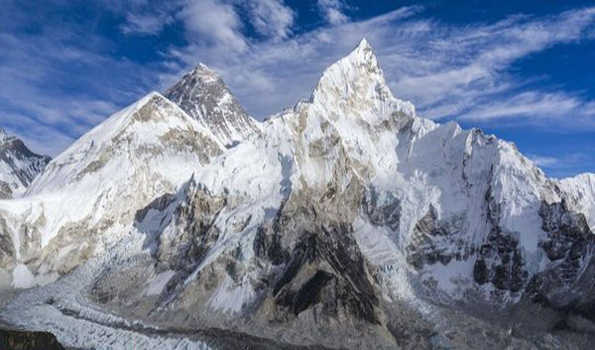Samikhsya Bureau
Since Sir Edmund Hillary and Tenzing Norgay first summitted Mt Everest in 1953, more than 4,000 mountaineers have reached the highest point on earth.
They probably never imagined that the giant they summitted would one day turn into a dumpster.
When recreational mountaineering skyrocketed in the 1980s, the ugly side of the business started becoming apparent. Every year, as the spring develops, Everest is swamped with tourists. Tour groups, together with teams of Sherpas, unite to begin their long-awaited journeys. Everest Base Camp becomes their home for the next few weeks that usually keeps the region occupied, and the mountain experiences heavy traffic.
Climbing Everest has evolved. It does not involve mystery and extraordinary calculations as it used to. Commercialisation has taken off so rapidly that experience, proper training and safety are being overlooked for the sake of profit.
According to a report in The kathmandu Post on Monday, as Mt Everest continues to attract a growing number of big-spending climbers, there is little attention paid to the ugly footprints they leave behind. The level of pollution is soaring. The trash left behind does not easily degrade due to the icy temperatures. In addition, the melting glaciers due to global warming have exposed the litter further.
It is time we take a step back and ask ourselves: Why does Everest deserve that? When will we start being accountable?
Human-generated waste from different camps is simply brought down and dumped into open pits. The nightmare of water contamination and environmental pollution is becoming a reality. Enduring plastics and oxygen cylinders left behind add to this degradation.
On top of everything, climate change is making this problem worse and more unpredictable. The Nepal government has demanded that mountaineers bring back their waste or face a $4,000 fine.
However, enforcement is still questionable. According to the Sagarmatha Pollution Control Committee, climbers brought down nearly 25 tonnes of trash and 15 tonnes of human waste in 2017.
Everest still holds thousands of tonnes of trash. The pursuit of Everest and its glory attached to it has made people manic. Tourists who spend up to $100,000 to achieve ever-lasting glory simply do not care about a relatively tiny fine. Subsequently, tourists who are desperate to write their names in history are very unlikely to be troubled by this pollution.
The pollution is not limited to the mountain region. Human faeces get dumped in the trenches of nearby villages, which eventually becomes a pit of disgust that locals have to live with. It becomes worse during the monsoon when the faeces are flushed downhill into the river.
It is more than mere mountain pollution, and should this trend continue, the emergence of epidemics in the region is likely. These people need a solution to these problems. Converting these waste materials into renewable energy could be one of the potential solutions.
With the amount of money at stake, the closing of Everest seems unlikely. However, the problem will only get worse the longer we wait. There is a critical need for mountain cleaning along with a sustainable policy solution.
There are organisations and groups committed to cleaning the litter, and who plan to convert this waste into biogas. The idea is encouraging, however, there is little room for optimism until we start seeing collective effort from the government.
The government still hasn’t realised the gravity of this issue, which is truly unfortunate. One of the few identities of Nepal is on the cusp of being tarnished. Our short-term greed could result in permanent damage unless we become proactive.
China recently announced that it would be closing its base camp to tourists, citing growing pollution. China vows to strictly enforce this commitment. Will Nepal be brave enough for a similar bold initiative to address the pollution issue?
The government’s passivity suggests they will continue to ignore the problem as long as Everest continues to serve as a cash cow. Everest and the Nepali people hope for a rational decision from the government. On one side, the permit fees generating millions of rupees might be too striking to ignore. On the other, the situation might get out of control if a major policy is not brought forward.
So, the question is how do we enforce regulation that is pragmatic while still bringing the needed change? The right balance is important.
Significant investment is necessary to collect the trash. The idea of collecting trash using technology has been brought forward, but no solid strategy has been adopted.
In the words of Dutch climber Wilco van Rooijen, “The danger is not the mountain anymore, it is the number of people on it.” Of course, he was referring to the safety of climbers, but it applies to the environment and the mountain in general.
The monument that has always been our pride and identity is turning into a mortification. The issue is more critical than a lot of us realise. Mt Everest is crying. It needs our help.




